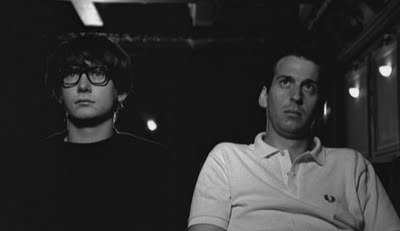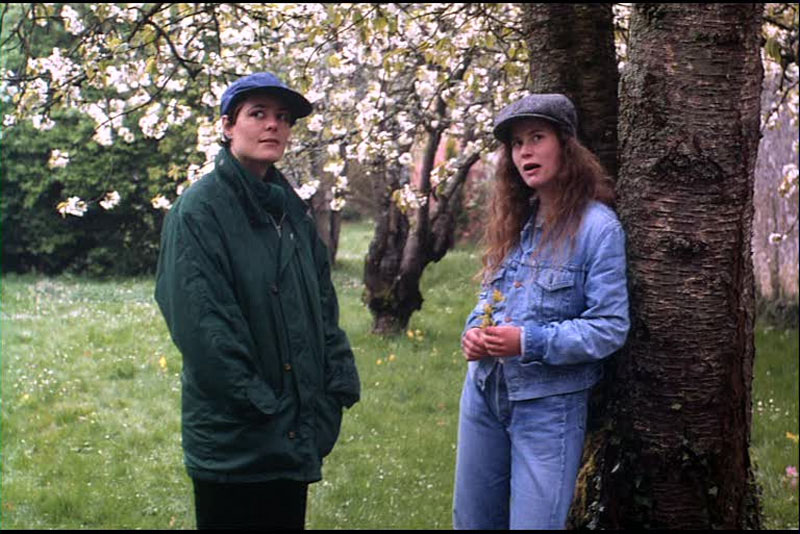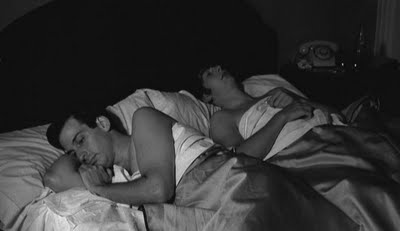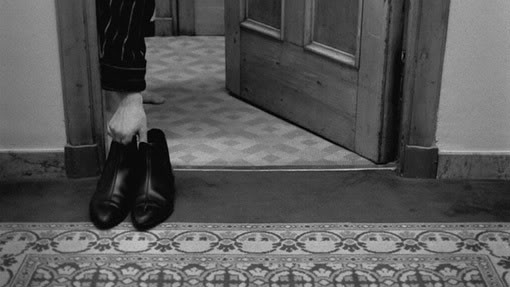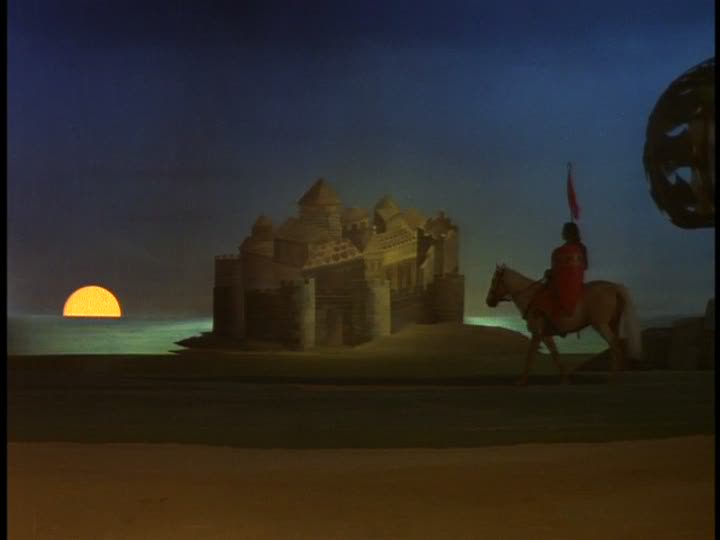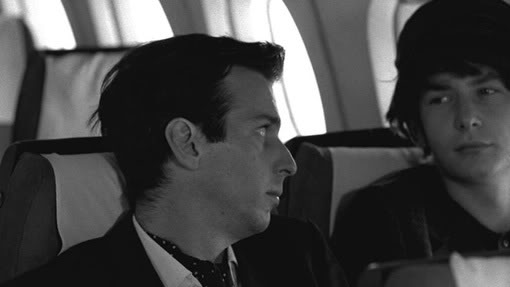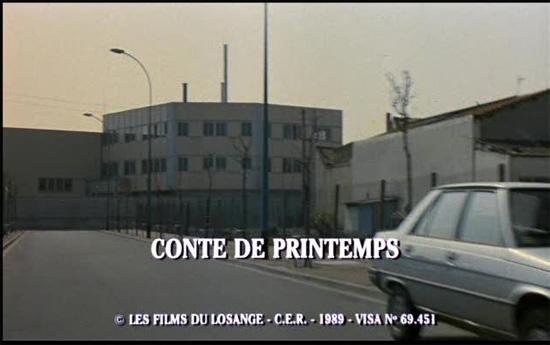From the Chicago Reader (November 6, 1992). — J.R.
THE HOURS AND TIMES
*** (A must-see)
Directed and written by Christopher Munch
With David Angus, Ian Hart, Stephanie Pack, Robin McDonald, Sergio Moreno, and Unity Grimwood.
A TALE OF SPRINGTIME
** (Worth seeing)
Directed and written by Eric Rohmer
With Anne Teyssère, Hugues Quester, Florence Darel, Eloise Bennett, and Sophie Robin.
It’s easy enough to understand why gay and lesbian film festivals exist, especially at this juncture in history, but I can’t say I’m happy about what they do to classifying films. After all, we don’t have festivals devoted to heterosexuals or dead white men or Catholics or intellectuals or Republicans or Democrats, and I sincerely doubt that any good film should be categorized in so parochial a fashion.
By the time this review appears, we’ll probably have elected a president — our first — who professes to consider gays and lesbians part of the American mainstream, not a “special” category. This fact alone prompts some consideration of what it means to perpetuate such categories, in a film festival or in a review.
Though it’s natural for an oppressed minority to band together — for consciousness raising, among other reasons — the meaning of such events to the public at large is something else. I think a kind of violence is done to certain ideas and experiences, including certain films, by calling them gay — or heterosexual, for that matter. Does it make any sense for us to describe Plato’s account of Socrates as gay philosophy — or Hegel’s Phenomenology of Mind as straight philosophy? Do we describe King Lear as gay theater because of what Shakespeare may have done in his spare time?
According to Carl Dreyer’s biographer, the filmmaker was homosexual and heterosexual at different stages of his career — apparently straight when he made his only feature with a homosexual subject, Mikael (1924), and apparently gay around the time he made Vampyr (1932). Which, then, are Dreyer’s “gay” and “straight” features? And what do we gain by describing them in these terms? If we agree with Gore Vidal that “gay” and “homosexual” are adjectives rather than nouns, and adjectives that refer to acts rather than to individuals, then to call a film “gay” or “homosexual” is a serious misnomer. Still, the ghettos created by such words are palpably, painfully real.
Strange as it seems, it’s actually politically correct in many circles nowadays to justify ghettos and fight to preserve them. In Boyz N the Hood writer-director John Singleton accepted, even supported ghettos and refused to blame white people for creating and perpetuating them — indeed, he reserved most of his scorn for black women (for not raising their sons properly) and black men (for not properly policing their own ghettos). I suspect that this movie found as much favor as it did among whites simply because it accepted black ghettos. And given the rampant homophobia at the moment, I suppose gay film festivals could be defended too as convenient structures of containment, for films and spectators alike.
Fortunately, however, it hasn’t always worked out that way. A remarkable number of original, outspoken American independent films and videos with gay themes have appeared over the past couple years, and they’ve hardly been restricted to festivals. Poison, My Own Private Idaho, Swoon, Rock Hudson’s Home Movies, the videos of Sadie Benning, and Christopher Munch’s The Hours and Times are only the first half dozen examples that spring to mind, and significantly, only the last two of these are included in the 12th Chicago Gay and Lesbian International film festival, which starts this weekend. The first two have already shown here commercially, Poison at the Music Box and My Own Private Idaho at several theaters; Swoon starts its run at the Music Box next weekend, concurrently with the festival; and Mark Rappaport’s extraordinary hour-long video, Rock Hudson’s Home Movies, will open at the Film Center the weekend after that.
In point of fact, The Hours and Times — a 60-minute 35-millimeter black-and-white feature playing at the festival on Wednesday night — has practically nothing in common with the other five “gay” films on my list, and much more in common with Eric Rohmer’s “straight” A Tale of Springtime, also showing at the Music Box this week. Both movies feature a great deal of talk over a few days’ time, most of it between two people, and both are about the kind of sexual tensions that such talk expresses, stimulates, prolongs, complicates, and sometimes dissipates. The possibility of sexual seduction is a teaser in both films, but in both cases it proves a decoy — or at most a point of departure. Both stories take place during the spring in picturesque western European settings; both concentrate on ambitious characters in their 20s temporarily separated from their spouses or usual lovers and experiencing some uncertainty about their lives. The two main characters in each movie are same-sex friends who briefly share the same living space and discuss sex in some detail. The real drama in both movies has everything to do with the dynamics of friendship or love and practically nothing to do with actual sex.
A major difference is that A Tale of Springtime takes place in the present among fictional characters while The Hours and Times is set in 1963 and involves two nonfictional pop icons, John Lennon and Brian Epstein. But it might be argued that the period and the fact that Lennon and Epstein are famous are both ultimately of secondary importance. (Perhaps the most important thing about the period is the way it inflects Munch’s film style, which alludes to both A Hard Day’s Night and Godard films like Band of Outsiders.) The fact that two men are featured in The Hours and Times and not women (like the two lead characters in A Tale of Springtime) is arguably equally nonessential.
The four days Epstein and Lennon spent in Barcelona in the spring of 1963 are the subject of the film. The holiday occurred about three weeks after Lennon’s wife Cynthia gave birth to their son, Julian, in Liverpool: Lennon visited her and his son only once at the hospital, a week after the baby was born, and then went off with Epstein while the other Beatles were vacationing in the Canary islands. What’s generally known about this trip to Barcelona is that Epstein was morosely in love with Lennon and hoped to have an affair with him.
Both of the accounts of this episode I’ve read — in Peter Brown and Steven Gaines’s The Love You Make: An Insider’s Story of the Beatles (1983) and Albert Goldman’s The Lives of John Lennon (1988) — assume that Epstein had sex with Lennon in Barcelona; Goldman, pretending rather unpersuasively to know “the real story” (was he hiding under the bed?), goes into graphic detail. But writer-director-cinematographer Munch said in an interview with Amy Taubin in the Village Voice that “Lennon said that their relationship was unconsummated and I felt that people attempting to address what happened should respect that.” Even more to the point, Munch remarked to Taubin that the complicated relationship between Epstein and Lennon couldn’t be resolved by a sexual act. So much for gossip — though paradoxically the promise of such revelations is what will bring most people to the movie.
What’s most impressive to me about The Hours and Times is the nature and degree of Munch’s research, the same kind of research Stanley Kwan and his screenwriters did on the silent film star Ruan Ling Yu for Actress, the Hong Kong movie recently shown at the Chicago film festival. Munch spent time in London and Liverpool, read all the books that dealt with this episode, spoke to a good many people who knew Epstein and Lennon, and most important, thought a great deal about his subject, then wrote something extremely simple but highly assured, even rock-solid in its confidence — a story so densely yet clearly imagined, so thoroughly conceived and subtly realized that embellishments are unnecessary. (The script was written in only two days and shot in six, though postproduction lasted over two years.) One feels that Munch knows Epstein and Lennon and their relationship like the back of his hand — especially Epstein, the true center of this story — but he doesn’t know precisely what transpired between them in Barcelona. And unlike Goldman he doesn’t want to pretend that he does (or for us to pretend that we do). The consequence of this reticence and simplicity can be felt in every aspect of the film, from the spare shooting style to the unadorned music (solo piano and guitar) to the white fade-outs ending most sequences to the wholly purposeful performances of David Angus as Epstein and Ian Hart as Lennon (Angus is especially impressive).
Unfortunately, Munch’s refusal to build to a dramatic climax or gossipy payoff — indeed, to conform to any received ideas about moviemaking — has probably been responsible for the film’s poor performance at the box office elsewhere in this country. But this shouldn’t scare you away. The Hours and Times is as fresh, as vital, and as creative as any independent American feature to have appeared this year, but it doesn’t have the kind of brilliance that can be excerpted for promotion on TV: a clip on Siskel & Ebert wouldn’t even begin to give you a clue about what it’s like.
As Munch’s casual references to Henri Matisse, Antonio Gaudi, and Ingmar Bergman’s The Silence suggest, The Hours and Times is resolutely modernist. A Tale of Springtime, by contrast, is unabashedly premodernist. The fact that neither film has the foreshortened sense of history or the flattened sense of style associated with postmodernism is one of the most refreshing things about them. (Most other current movies with artistic ambitions assume a casual contempt for both history and style beyond their Madison Avenue equivalents.)
Although Eric Rohmer — the writer-director of A Tale of Springtime, now in his early 70s — is a genuine old master, I sometimes begrudge him his form of mastery: basically his work is an accumulation of minor and slightly archaic virtues. By far the oldest and most conservative — politically as well as aesthetically — member of the French New Wave, Rohmer periodically continues to charm U.S. art-house audiences with his nubile heroines, snooty cultural references, and detached, symmetrical storytelling, not to mention the carefully sculpted quality of his dialogue. For me all this usually adds up to the dull perfection of a miniaturist from another century (usually the 18th) who never tires of telling new versions of the same story. No matter how well he does it, the glacial distance Rohmer maintains from his characters and plots seems to place all evidence of passion in his work — there’s generally at least one slow-motion flirtation per movie, usually abortive — under glass, to be nibbled at by the spectator like a dainty hors d’oeuvre.
As critic Tom Milne has cleverly suggested, most of Rohmer’s intent in A Tale of Springtime can be summed up by “a casual inspection of four apartments” (though this description omits the brief and somewhat pedantic allusions to philosophical themes in the dialogue — mainly Gyges’s ring from Plato and transcendentalism). We glimpse the first three apartments during the film’s opening minutes, when the young heroine, Jeanne (Anne Teyssèdre), a philosophy teacher, temporarily moves out of her boyfriend’s messy apartment to her own spotless and orderly flat, where she’s decided to stay for a bit while her boyfriend is away from Paris. Unfortunately, her own place is still being occupied by her cousin, so when Jeanne attends a party that evening (held at the third apartment, a bright and cheerful spot full of family photos) and meets Natacha (Florence Darel), a somewhat younger piano student whose boyfriend is also away briefly, she accepts Natacha’s invitation to stay with her for a few days at her father’s flat (the fourth apartment), which Natacha currently occupies now that her father, Igor (Hugues Quester), is living with Eve (Eloise Bennett) — a philosophy student about the same age as Natacha whom Natacha detests.
Jeanne and Natacha become bosom buddies, but a certain tension enters their friendship after Jeanne meets Igor under embarrassing circumstances and both young women wind up at Igor’s country retreat at the same time that Igor and Eve are there. At the root of this tension is Natacha’s apparent wish for her father to become involved with Jeanne instead of Eve — a possibility that comes to the fore once Eve, unable to deal with Natacha’s hostility, returns to Paris and Natacha goes off with her boyfriend. Jeanne and Igor spend several hours alone together negotiating their mutual attraction, both aware that Natacha may be playing matchmaker.
If this sounds like a rather complicated plot for a relatively slight story — and this synopsis is far from complete — that is entirely characteristic of Rohmer. His strength is keeping the viewer occupied with minutiae for considerable stretches, using charismatic actors and adept pacing. Rohmer’s assured but ultraconventional and generally static method of filming dialogue — a style often misleadingly and unjustifiably referred to as “classical” — is usually so devoid of nuance that a little flourish like the camera pulling back at some point becomes a major event. Such things might carry a certain meaning on their own if Rohmer seemed to be using them to sensitize us, but it might be more accurate to say that he’s simply waking us up rather than drawing us into the nuances of his story.
While I have nothing but admiration for Rohmer’s highly uncharacteristic 1978 medieval musical Perceval le Gallois and find much to respect in his equally neglected first feature, Le signe du lion (1959) — perhaps his two biggest commercial flops — the talky erotic novellas that are the source of his reputation sometimes arouse the philistine in me: I feel almost at one with the Gene Hackman character in Arthur Penn’s Night Moves who remarks that seeing a Rohmer film “is kind of like watching paint dry.”
That very nearly describes my experience of the first half hour or so of A Tale of Springtime (1989) — the first in a prefigured quartet of features called “Tales of the Four Seasons,” a follow-up to Rohmer’s “Six Moral Tales” and his six “Comedies and Proverbs.” If the film got steadily more interesting after that, it was because I became convinced that watching paint dry can be a fairly absorbing activity, at least if the color of the paint keeps changing in the process. Being unable to predict what was coming next in the slender, minimal story or to anticipate the minor revelations about characters comprised most of my interest. The same is true, I should add, of The Hours and Times, but there the characters and their complex interactions — based on differences of class, education, ethnic culture, sexual orientation, and relations to power — keep us discovering them at every turn. Rohmer’s characters, by contrast, seem finished even before the stories start; the only game is to discover which tidbits about them the filmmaker has yet to reveal.

